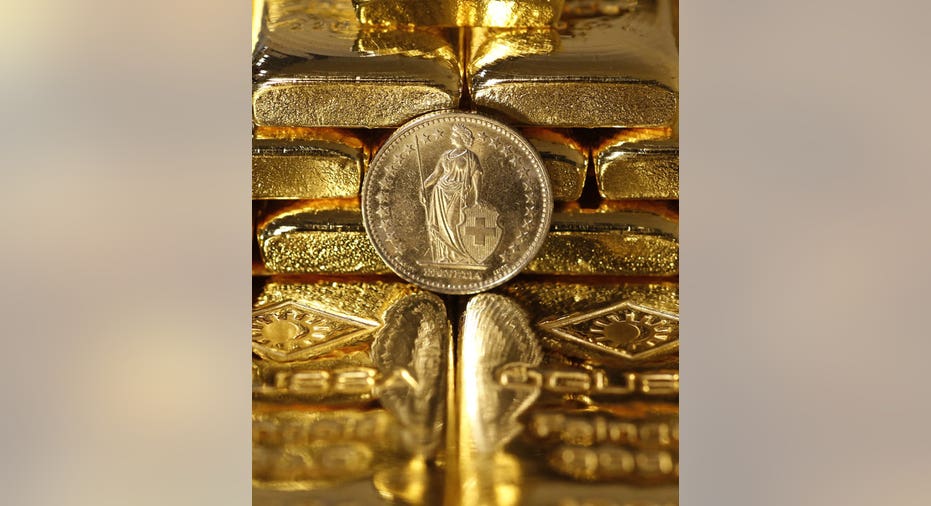The Consistency of a Commodities Forecaster

April, 2011. A dark, subterranean restaurant in midtown Manhattan; a weigh-station of sorts for bankers, traders, and bulge bracket investment firm types – all of whom were invited to acquire investment wisdom imparted by a financial network television guru. The group capered down the narrow, steep staircase in bunches - like peasant soldiers, dressed in uniforms issued by Valentino and Versace.
The restaurant was a rackety place, supported by roundish columns of Wall Street twenty-somethings, lurching towards one another in peculiar attitudes, as though they’ve been frozen in the act of collapse. Conversations were “mid-town paltry” – chock full of qualifiers, clutter, and plans on where they will be “summering” next year.
The guru entered the room, larger than life. His meet and greet snappishly evolved into a “Federal Reserve / Commodity State of the Union Address,” ending with a high testosterone Q&A. I’ll never forget the question, “Will the Fed’s easing, stoke inflation, causing commodities to persist in climbing higher?” The crowd grew eerily silent; the query hung in the air similar to some unexplained equation of general relativity; one that needs a prophet or complete novice to unravel the answer. It seemed the question was either staged or it was the matter everyone was waiting for him to address. As an aspiring journalist – I took notes – the only reason I vaguely recall what he said.
He declaimed like an orator on a barricade, confirming, “It is truly different this time!” He went on to express his deepest conviction of accelerated demand from countries including China and India – how they have altered commodity prices so far and so fast above their 25, 50, or even 100 year downward trends (on an inflation adjusted basis & excluding energy) – it has caused a severe shortage of natural resources – commodity prices simply cannot ever be the same. He abruptly changed gears, tossing convincing facts and figures including China having doubled its economy in just one decade and that their economy imports somewhere near 50% of the world’s concrete, copper, and iron ore.
Fear the FOMC
The guru concluded his dialogue by throwing rocks at the FOMC and its Quantitative Easing programs; how this “money printing will do nothing except stoke hyperinflation and trash the U.S. dollar.” He was convinced the best course of action would be to immediately sell the U.S. dollar, buy gold, buy a commodity basket, take cover, expect the worst and hope for the best. It was a brilliant display of cognitive consonance; the guru was proficient in expressing his deepest and most closely held beliefs without much challenge or contradiction.
Since that mid-town dinner circa 2011, the gold price has dropped from $1,550/oz. to $1144/oz. Similarly, oil has more than halved from $112/bbl. to $45.50/bbl. while copper has dropped 50% and iron ore 70%. And during the same time period, the U.S. dollar index has climbed from 75.00 to 96.00 while the S&P 500 has added more than 600 points. All the while, inflation has dropped like a feather from 3.0% to 0% currently.
I’m thrilled to have recovered my scribbled notes from this dinner of 4+ years ago; it was a fragment of financial archeology and it helped me reaffirm how profoundly difficult it is to forecast what will happen tomorrow let alone next month or next year.
I don’t need to be right
Today’s macro landscape is perhaps more stable than market volatility would suggest. The U.S. economy is stable; Europe is no worse than feared and emerging markets continue to decelerate but are not in disarray. It is true that commodity-related stock sectors are cheap – in some cases fantastically cheap. However, it is also true that plunges in equity valuations are merely tracking drops in earnings and profit. In other words, valuations are cheap for a reason! Remember that both China and India are net importers of oil. For all the fretting you may hear over fiscal imbalances via falling reserves and weak commodity prices, remember lower oil prices can be an economic virtue to those who import it.
Global growth has slowed and slower growth begets a collapse in investor demand. Lower investor demand begets lower inflation expectations. Lower inflation expectations beget a shift away from concerns over the U.S. dollar and Federal Reserve to that of recession. This will eventually beget a series of distortions that will ripple through the markets for weeks, months, or even years to come.
I still believe the majority of this commodity rout is due to supply and a lot of that supply was provided by human initiative spawned by very cheap funding (i.e. FOMC) in a great attempt to cash-in on the growth trajectories of India, China, and even Brazil. Little did we know that while the guru was speaking on that chilly April evening, companies were drilling full bore into the carbon chasm providing us with oil – to the extent where even a near 50% reduction in rig counts (YoY) has done little to alter our daily production levels.
Currently, inflation is stagnant (except for non-tradeables including health care & education) and commodity prices are back on their heels. The aftershocks of QE are just beginning to be felt and the aftershocks will be experienced in strange ways and for inexplicable reasons. However, at some point, a higher risk tolerance will begin affecting commodity supply more than demand. It always does.
For years investors peered at misleading pseudo-pictures of the market including the breathless commentary about inflation fears, the U.S. dollar implosion, $200/bbl. crude prices, gold hoarding, and monetary policy gone mad – none of which have come to pass. Take heed and realize that chasing returns or trends rarely ends well.



















